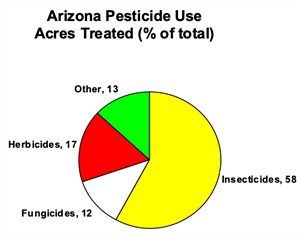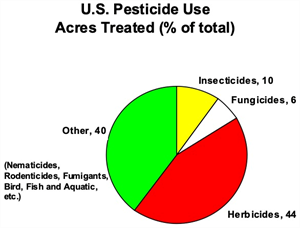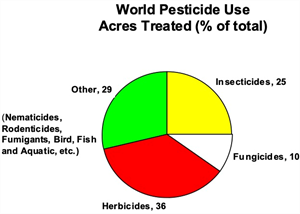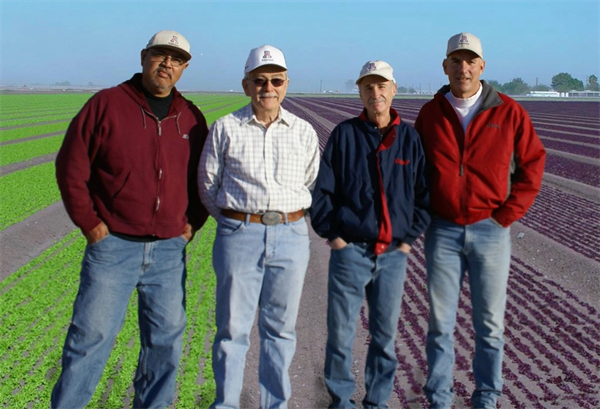
Soils with excess soluble salts, saline soils, and/or excess sodium (Na+) concentrations (sodic) are a natural feature of desert soils and common in arid land agriculture. This is primarily due to an accumulation of soluble salts near the soil surface as water evaporates from the soil surface.
Saline soils are a problem in crop production systems because of the sensitivity to salinity of crop plants, although plants vary in their degree of sensitivity. The period of greatest plant sensitivity to salinity is in the early stages of development, during germination and stand establishment.
Sodic soils are a problem in crop production systems because of the adverse effects of excess sodium on soil structure, causing a dispersion of soil particles and the breakdown of soil aggregates. This leads to poor water infiltration and percolation in the soil profile.
Some basic points associated with saline and/or sodic soils and management are outlined in the following sections.
https://www.nrcs.usda.gov/wps/PA_NRCSConsumption/download/?cid=nrcseprd589210&ext=pdf
Sodic soil reclamation does require an amendment that will facilitate the chemical exchange of Na+, usually from a calcium (Ca2+) source, such as gypsum (CaSO4).
An effective and straightforward method of calculating a leaching requirement (LR) can be calculated with the following equation that was presented by the USDA Salinity Laboratory (Ayers and Westcot, 1989).
Leaching Requirement (LR) Calculation:
Where:
ECw = salinity of the irrigation water, electrical conductivity (dS/m)
ECe = critical plant salinity tolerance, electrical conductivity (dS/m)
i.Drip irrigation systems are commonly very limited in this respect.
i.Examples: wheat, alfalfa, sudangrass, etc.
At events and in the halls of the Yuma Agricultural Center, I’ve been hearing murmurings predicting a wet winter this year…
As the Yuma Sun reported last week, “The storms of Monday, Aug. 25 [2025], were the severest conditions of monsoon season so far this year in Yuma County, bringing record-rainfall, widespread power outages and--in the fields--disruptions in planting schedules.”
While the Climate Prediction Center of the National Weather Service maintains its prediction of below average rainfall this fall and winter as a whole, the NWS is saying this week will bring several chances of scattered storms.
These unusually wet conditions at germination can favor seedling disease development. Please be on the lookout for seedling disease in all crops as we begin the fall planting season. Most often the many fungal and oomycete pathogens that cause seedling disease strike before or soon after seedlings emerge, causing what we call damping-off. These common soilborne diseases can quickly kill germinating seeds and young plants and leave stands looking patchy or empty. Early symptoms include poor germination, water-soaked or severely discolored lesions near the soil line, and sudden seedling collapse followed by desiccation.
It is important to note that oomycete and fungal pathogens typically cannot be controlled by the same fungicidal mode of action. That is why an accurate diagnosis is critical before considering treatments with fungicides. If you suspect you have seedling diseases in your field, please submit samples to the Yuma Plant Health Clinic or schedule a field visit with me.
National Weather Service Climate Prediction Center: https://www.cpc.ncep.noaa.gov/
National Weather Service forecast: https://forecast.weather.govInterested in staying up to date on the latest robotic ag technologies? The International Forum for Agricultural Robotics, FIRA, hosts two annual conferences focusing on robotics and autonomous farming solutions, one in Europe and one in the USA. They recently uploaded recordings of sessions from the 2024 World FIRA, held in Toulouse, France to YouTube. The site also contains playlists of themed breakout sessions from previous European and USA events (over 400 videos total). Highlights include panel discussions with growers and company executives, robot demos, and inno’pitches from startup companies. Most of the content, particularly from the USA events, is high quality and worth viewing.
Check it out by clicking here or on the image below.
There are many different types of pests that affect crops grown in Arizona. The three types of pests most often cited as the source of most problems are insects, diseases and weeds. These are the same types of pests that are cited as causing the major agricultural pest problems across the U.S. and worldwide. Graphs 1-3 illustrate, however, that the relative importance of these types of pest problems differ in Arizona from the rest of the U.S. and worldwide. In terms of pesticide use, worldwide herbicides accounted for 36% of total usage, insecticides 25%, and fungicides 10% and other 29% (nematicides, rodenticides, fumigants, bird, fish and aquatic pests). In the U.S., herbicides accounted for 44%, insecticides 10%, fungicides 6%, and other 40% of pesticide use. In Arizona, however, insecticides accounted for 58%, herbicides 17% and fungicides 12%. This is only an indirect measure of the relative importance of these three areas of pest management and may be heavily influenced by the amount of pesticides used. For instance, it is common to spray for insects five or more times per season while it is uncommon to spray for weeds more than twice. None the less, these graphs illustrate that weeds are the predominant pest problem in agricultural areas across the U.S. and worldwide.



We wanted to share the information above obtained from the PCA Study Guide Section VI prepared by our "amigo" Barry Tickes who is teaching the Applied Weed Science Class at the University of Arizona this semester.

Results of pheromone and sticky trap catches can be viewed here.
Corn earworm: CEW moth counts down in most over the last month, but increased activity in Wellton and Tacna in the past week; above average for this time of season.
Beet armyworm: Moth trap counts increased in most areas, above average for this time of the year.
Cabbage looper: Moths remain in all traps in the past 2 weeks, and average for this time of the season.
Diamondback moth: Adults decreased to all locations but still remain active in Wellton and the N. Yuma Valley. Overall, below average for January.
Whitefly: Adult movement remains low in all areas, consistent with previous years.
Thrips: Thrips adults movement decreased in past 2 weeks, overall activity below average for January.
Aphids: Winged aphids are still actively moving, but lower in most areas. About average for January.
Leafminers: Adult activity down in most locations, below average for this time of season.